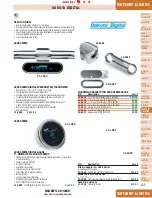
7 PREPARING FOR USE
22
–
Adjust the basic position of the hand brake lever. (
–
Adjust the basic position of the foot brake lever.
–
Set the basic position of the shift lever.
–
Get used to the handling characteristics of the motorcycle on a suitable surface before undertaking more
challenging trips.
Info
Your motorcycle is not approved for use on public roads.
When off road, it is recommended that you are accompanied by another person on another vehicle
so that you can help each other.
–
Try also to ride as slowly as possible and in a standing position to get a better feel for the motorcycle.
–
Do not make any off-road trips that exceed your ability and experience.
–
Hold the handlebar firmly with both hands and keep your feet on the footrests when riding.
–
Do not take luggage along.
–
Do not exceed the maximum permissible weight and the maximum permissible axle loads.
Guideline
Maximum permissible overall weight
335 kg (739 lb.)
Maximum permissible front axle load
145 kg (320 lb.)
Maximum permissible rear axle load
190 kg (419 lb.)
–
Check the spoke tension. (
Info
The spoke tension must be checked after half an hour of operation.
–
Run in the engine. (
7.2
Running in the engine
–
During the running-in phase, do not exceed the specified engine performance.
Guideline
Maximum engine performance
During the first 3 operating hours
< 70 %
During the first 5 operating hours
< 100 %
–
Avoid fully opening the throttle!
7.3
Preparing the vehicle for difficult operating conditions
Info
Use of the vehicle under difficult conditions, such as on sand or on wet and muddy surfaces, can result
in significantly increased wear of components, such as the drive train, brake system, or suspension
components. For this reason, it may be necessary to inspect or replace parts before the next scheduled
service.
–
Clean the air filter and air filter box.
Info
Check the air filter approx. every 30 minutes.
–
Check the electrical connector for humidity and corrosion and to ensure it is firmly seated.
















































